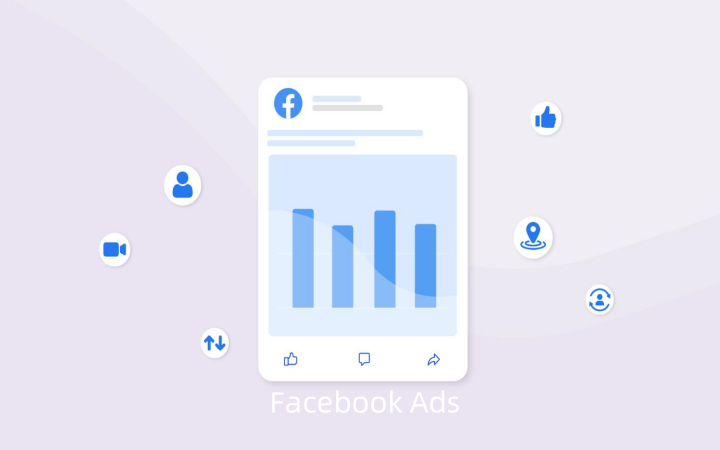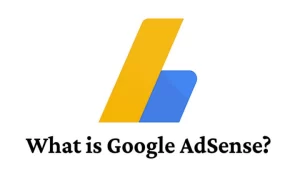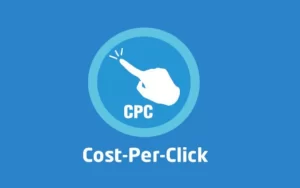Facebook, the social media giant, has ruled online advertising for a long time. With its massive user data and superb targeting abilities, it remains a powerhouse. Businesses trying to reach ideal audiences rely on it heavily. But Facebook’s algorithms keep changing, so advertising there can be tricky. What worked before might not work now. For small business owners and marketing managers, understanding the changes is important.
This detailed guide to Facebook advertising in 2024 explores strategies, best practices, and tips. The goal? Help your ad campaigns stand out, connect with potential customers, and get you a good return on investment (ROI). We’ll make sure your ads cut through the noise and resonate with people.

What Are Facebook Ads?
Facebook ads are promotional messages from businesses. They aim to reach people who match the target audience. These ads are displayed in various places on Facebook. Like newsfeeds, stories, desktop sidebars, or even Messenger. Facebook tracks how users interact with each ad. Then, it provides analytics tools so advertisers review campaigns instantly.
Facebook Ads: Unlocking Growth Potential
Facebook advertising unlocks a world of opportunities. It allows businesses to expand their online presence, connect with targeted audiences and attract new customers.
Target Like Never Before
Facebook’s advanced targeting capabilities set it apart. With granular precision, you can reach specific demographics, interests, behaviors, and more. Say goodbye to imprecise campaigns.
Budget-Friendly Marketing
Cost-efficiency is key with Facebook ads. Set your budget, pay only when desired actions occur. Traditional media can’t match this flexibility and affordability.
Measurable Results
Traditional advertising does not give detailed insights into who engages with ads. However, Facebook ads provide specifics about performance and engagement.
High Return on Investment (ROI)
Properly strategizing Facebook ads can potentially yield high ROI. Targeting the right audience and optimizing performance is key.
Integration with Other Marketing Efforts
Facebook advertising works well integrated into comprehensive marketing plans. It complements other digital initiatives effectively.
Improved Brand Awareness and Loyalty
Engaging, consistent Facebook ads remind consumers about your brand. This improves awareness and loyalty – crucial for lasting business achievements.
Types of Facebook Ads

Facebook provides various ad types. They are suitable for different marketing goals. Some key ad formats to consider include:
Image Ads
Image ads are basic ad formats. A single image grabs attention with ad text. They promote a product or message. Image ads are simple and direct. They rely on a strong visual to quickly grab attention.
- Businesses wanting to increase brand awareness.
- Advertisers with little time or resources for content creation.
- Products or services with one clear benefit to highlight.
Video Ads
RehumanizeMotion captures attention. Video ads employ moving pictures to narrate tales or display products actively. They come in various sizes and lengths – ranging from short bursts to extended clips.
Best for:
- Captivating audiences with gripping narratives.
- Showcasing goods or services enhanced by demonstration.
- Companies cultivating relatable, authentic images.
Carousel Ads
Carousel ads let you to show multiple pics and vids in one place. People can scroll through. This format works well to present various products, benefits of an offering, or a series of visuals that tell a tale.
Best for:
- Highlighting diverse product options buyers may want.
- Guiding consumers step-by-step through a process or story.
- Eye-catching visual ads that inform and engage.
Slideshow Ads
Slideshow ads can be a hidden treasure for advertising. They make still images seem alive with a simple motion. What’s great? These ads load fast which helps places with slow internet. They also share complex ideas through basic animation.
Best for:
- Creating engaging and informative ads on a budget.
- Brands that tell key info through visuals.
- Getting video benefits without the high cost.
Collection Ads
Facebook has a new ad format. It is called an immersive ad. This ad pairs visually appealing experiences with shopping. Users can browse products without leaving Facebook.
best for:
- Stores looking to offer an in-store feel online. They can showcase products attractively.
- Impulse buys that appeal to Facebook users. The collection of products entices shoppers to make purchases.
- Retailers capitalizing on Facebook users. These customers stay on the app instead of leaving to shop.
Instant Experience Ads
Instant Experience Ads used to be called Canvas ads. They provide a fully immersive full-screen experience. Smoothly transitioning from the ad to a mobile-optimized landing page.
Ideal for:
- Brands want to tell a more intricate story or offer a rich experience.
- High-consideration purchases benefit from a more thorough ad interaction.
- Showcasing products or services that shine with full-screen visuals and multimedia.
Lead Generation Ads
Lead generation ads collect info from people interested in your offerings. They build email lists and get inquiries – powerful tools.
Ideal for:
- Businesses seeking to grow potential lead lists.
- Services requiring follow-up to share details, and finalize sales.
- Providing downloadable freebies as lead magnets.
Link Ads
Link advertisements prove quite direct when steering traffic toward your website. A noticeable call-to-action button streamlines users’ ability to access designated landing pages.
Optimal uses:
- Unveiling fresh products or website additions, attracting visits.
- Campaigns needing direct user action or conversion tracking.
- Coordination alongside wider marketing efforts across platforms.
How to Advertise on Facebook Effectively
Now, with the why firmly established, we’ll move into the how— the step-by-step process to create and launch effective Facebook ad campaigns.
Step 1: Set Your Goals
Before beginning your Facebook ad campaign, you must define your end goal. Goals act as guiding lights in your Facebook advertising plan. It may be increasing brand recognition, driving website visitors, generating leads, or boosting sales. Specific, measurable, achievable, relevant, and time-bound (SMART) objectives keep you focused and allow accurate success measurement.
Kickstart by:
- Clearly understanding your desired outcome
- Identifying your target audience and their marketing funnel stage
- Determining key performance indicators (KPIs) to gauge success
- Remember, goals should align with your broader marketing strategy and adapt as market conditions evolve.
Step 2: Understand Your Audience
To make ads people connect with, know who you’re talking to. Use Facebook’s insights tool to create detailed buyer personas.
Gain insights into:
- Demographics like age, gender, location, language
- Interests, hobbies to personalize content
- Behaviors, e.g. shopping habits, device use for targeting
- Deeply understanding your audience will improve targeting. It’ll also shape your ad’s creative direction.
Step 3: Choose Your Ad Type and Placement
Facebook has many ad styles to share your brand story or display your goods. They range from basic photos to interactive videos. Every format has pros and cons, fitting different goals and people.
Check out:
- Photo ads for easy, clear messaging
- Video ads that grab eyes and engage more
- Carousel ads showing multiple items or ideas in one place
- Where your ad appears matters too. You can put them in feeds or Instagram Stories. Figure out where your audience hangs out most.
Step 4: Craft Compelling Ad Content
Your campaign’s face is your ad creative. Sophisticated targeting can falter without compelling content. Your ad should have a clear value proposition and be visually appealing.
Make sure your ads:
- Speak directly to audience needs and interests
- Encourage action, like learning more or purchasing
- Resonate emotionally through humor, inspiration, or narrative
Remember, testing different ad copies, images, and calls-to-action gives insights into what works best.
Step 5: Determine Your Budget and Timeline
Creating a financial plan is key for any ad campaign. Begin with an amount you feel okay spending. Facebook’s Ad Manager will help you use it wisely.
Here are some tactics:
- Pick a daily or lifetime budget based on how long your campaign runs
- Choose bidding and pricing options that stretch your money further
Schedule ads during times when your audience tends to be online. This boosts who sees them and how many interact.
Step 6: Measure and Optimize
Facebook ads let you track how they perform in real-time. Stay aware and ready to adjust if something isn’t working right. Review campaign performance often by Analyzing reach, engagement, and website conversions. A/B test ad elements to find winning combos. Pause underperforming ads. Increase budget for successful ones. Tweak targeting based on results.
- Studying reach metrics, user interactions, and website conversions from the ad
- Running A/B tests on different ad components to identify top-performing versions
- Pausing ineffective ads, increasing investment on high-performing ones, refining audience targeting using insights
How much does it cost to advertise on Facebook?
Facebook advertising uses an auction model. You bid against competitors for showing ads to target audiences. Prices fluctuate greatly based on factors like industry, viewers, time of year, and ad quality. The typical cost-per-click is around $1 to $2. However, many face much higher or lower rates due to competition.
Facebook Ads Best Practices
Experiment With Ad Formats
Various ad types may engage differently with your target audience. Try multiple formats then analyze which resonates strongest. Utilize the format yielding the highest returns for your specific objectives.
Leverage Dynamic Ad Customization
Dynamic ads adapt messaging uniquely for individual viewers according to their browsing behavior across the internet. E-commerce brands especially benefit by surfacing precise products matching each customer’s revealed preferences.
Compare Different Ads
Don’t guess if your ad works well. Try out different images, headlines, and text. See which combo gets the best results. That’s called A/B testing.
Show Ads to Past Visitors
Retargeting lets you show ads to people who visited your site or app before. Keeping your brand visible can get them to buy.
Target Similar People
Make lookalike audiences of new users like your current customers. They might want your stuff too. It grows your potential customer pool.
Getting Conversion Tracking Going
For precisely gauging ad success, enable conversion tracking. It lets you know – which ads yielded desired actions – like buys or signups.
Using Custom Audiences Ably
Construct custom audiences from customer records – for instance, emails or site visitors. Focus ads already interested eyes. Boost loyalty, grab engagement.
Tips to Improve Facebook Advertising ROI

Are Facebook ads not working well? Try these tips to boost results:
- Enhance Landing Pages: Link ads to optimized pages. Maximize conversion through great user experience.
- Re-Engage Past Visitors: Target ads at users who previously visited your site or content. Re-engage for higher impact.
- Tap Into Similar Viewers: Lookalike audiences mirror traits of existing fans, subscribers, or visitors. Reach expanded yet relevant new people.
- Monitor Key Metrics: You must keep track of stats that match your goals, like click rates, cost per new customer, and money made compared to money spent. Don’t ignore these important numbers.
- Keep Testing and Refining: Digital ads change all the time. You should regularly try new ad styles, audiences, and targeting. Doing this helps you stay ahead of others. Never stop looking for better ways to advertise.
FAQs About Facebook Ads
What is the cost of advertising with Facebook?
Advertising costs on Facebook are not fixed. They depend on factors like your industry, audience size, ad quality, and bidding method. You can start advertising with a budget as low as $5 per day.
How can I check if my Facebook ads perform well?
Go to the Ads Manager dashboard and look at metrics such as reach, engagement, and conversions. These will show how effective your ads are.
Which metrics matter most for analyzing Facebook ads?
Some crucial metrics are click-through rate (CTR), cost per click (CPC), conversion rate, and return on ad spend (ROAS). Tracking these gives insight into ad performance.
Is it okay to advertise on Facebook if I don’t have a business page?
While advertising minus a business page is doable, creating one is better. Business pages let brands connect with viewers and build communities. So it’s recommended to have one when advertising.
How frequently should I update my Facebook ads?
Swap ads when you get fresh, relevant stuff. Or if performance drops. Don’t get stale – people tune out repeated ads. So rotate ads often, avoiding fatigue.
What’s the perfect bidding technique for Facebook campaigns?
No single bidding approach fits all. Pick the suggested strategy matching your goal – like clicks, visibility, or conversions. Then test different methods, seeing what performs best for your needs.
Should I Boost Posts or Use Ads Manager?
You can get content to more eyes by boosting posts. It’s quick and simple. But Ads Manager provides advanced audience targeting options. Plus, more control over your ad campaigns. Ads Manager gives you more power.
Can I Advertise on Facebook for Free?
Sure, you can create a business Page on Facebook. Gain followers and share posts for free. But Facebook’s organic reach has dropped a lot. Paid ads are often needed to reach more people. Advertising costs money for broader audiences.
Conclusion
Advertising on Facebook offers potential for companies big and small. Its advanced targeting lets you aim ads to suit goals. There are many types of ads on Facebook. By knowing best practices in 2024, you can launch productive campaigns. These drives can be effective and generate positive returns. However, test and tweak based on data. That way you’ll stay ahead. Armed with these tips, you’re prepared to start mastering Facebook ads now.


